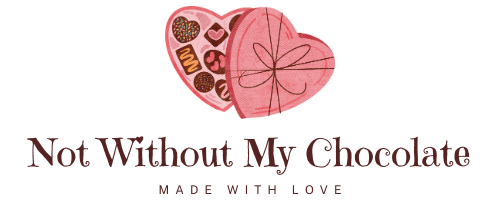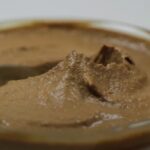Hello there, chocolate lovers! Today, we’re diving into a world of white chocolate.
So, what exactly is this creamy delicacy? In simple terms, it’s a confection made primarily from cocoa butter, sugar, and milk solids, with the notable absence of cocoa solids. Unlike its dark and milk counterparts, white has a pale ivory color, derived from cocoa butter.
Before we delve deeper, let’s clear the air around a few misconceptions. Some argue that white isn’t “real” chocolate because it lacks cocoa solids. However, this creamy goodness does contain a product of the cacao bean: cocoa butter. But is that enough to consider it real choco? Stick around, we’ll cover this later.
The Basics of Chocolate
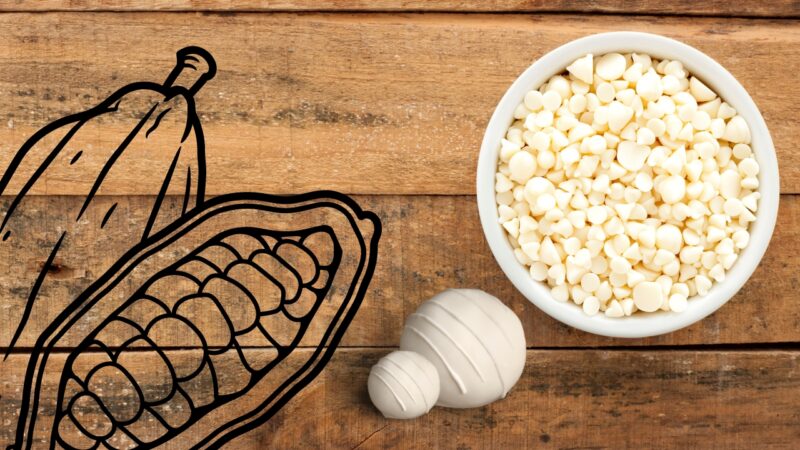
Brief History of Chocolate
Chocolate has a rich (pun intended) history dating back over 3000 years. The ancient Mayans and Aztecs prized cacao beans as gifts from the gods, using them as currency and to create a bitter, frothy beverage. Europe’s introduction in the 16th century led to the addition of sugar, milk, and eventually, the creation of the solid choco we know and love today.
The Cacao Tree and Cacao Beans
Starting its life on a cacao tree, specifically the Theobroma cacao. This tropical tree produces large, oval pods, each filled with about 20 to 60 cacao beans. These beans undergo a series of processes, including fermentation, drying, and roasting, to bring out the chocolatey flavor we’re familiar with.
The Choco-Making Process
Both a science and an art. The roasted cacao beans are cracked open to reveal cacao nibs, which are then ground into a paste. This liquor is further processed to separate the fat (cocoa butter) from the solids (cocoa powder). In traditional chocolate, these components are recombined in varying ratios, along with other ingredients, to create the diverse range of choco’s we see on the shelves.
Composition of White Chocolate
Cocoa Butter
At the heart of white chocolate is cocoa butter, accounting for at least 20% of its composition according to FDA regulations. This ingredient, derived from cacao beans, contributes a rich, creamy texture and imparts a subtle, chocolaty aroma.
Sugar and Milk Solids
Beyond cocoa butter, the other key ingredients in white chocolate are sugar and milk solids. Sugar gives that characteristic sweetness, while milk solids provide that creamy, melt-in-your-mouth texture we adore. The ratio of these ingredients can vary by manufacturer, but they are essential to achieving the balance of sweetness and creaminess.
Cocoa Solids?
As noted earlier, white chocolate lacks cocoa solids, the component that gives milk and dark their characteristic brown color and deep, bitter flavor. This omission is why white choco has a lighter, creamier, and far sweeter flavor profile compared to its counterparts.
Quality Ingredients
Like any culinary delight, the quality of the ingredients makes a difference. High-quality cocoa butter, sugar, and milk solids can transform a good piece of white chocolate into a great one, enhancing its smoothness, creaminess, and flavor.
Is it Really Chocolate?
The Controversy
And now, the million-dollar question: is white chocolate really chocolate? The answer isn’t as straightforward as you might think. Due to the lack of cocoa solids, white choco doesn’t have the same chocolaty taste as its siblings, which leads some purists to say it isn’t “real” chocolate.
Differentiating from its Siblings
While white chocolate does stand out for its color, flavor, and composition, it’s crucial to remember that it does still contain a key product of the cacao bean: cocoa butter. This shared origin links white, milk, and dark, despite their differences.
The Science
Cocoa Butter
Delving deeper we find that cocoa butter plays a pivotal role. Comprised of several fatty acids, cocoa butter is responsible for its creamy texture and its ability to melt at body temperature. It’s these unique properties that make cocoa butter irreplaceable in white chocolate production.
Role of Emulsifiers
Ever wondered how the disparate ingredients blend into a smooth, unified whole? Enter emulsifiers. These substances promote the mixing of ingredients that would otherwise separate. In white chocolate, lecithin is often used as an emulsifier, ensuring the cocoa butter, sugar, and milk solids meld seamlessly.
Texture and Melting Point
The unique texture and melting point are directly influenced by its composition. The absence of cocoa solids results in a smoother texture compared to dark or milk. Furthermore, the high cocoa butter content gives a relatively low melting point (around body temperature), contributing to its luxurious melt-in-your-mouth experience.
White vs. Dark vs. Milk
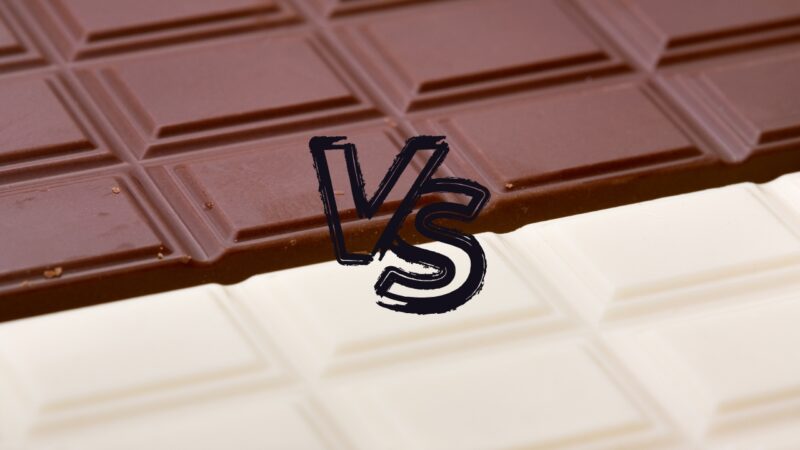
| White Chocolate | Milk Chocolate | Dark Chocolate | |
| Cocoa Solids | Absent | Present (10-20%) | Present (35-100%) |
| Cocoa Butter | Present (20% or more) | Present (can vary) | Present (can vary) |
| Sugar | High | Moderate | Low to None |
| Milk Solids | Present (14% or more) | Present (12% or more) | Usually Absent |
| Flavor | Sweet, creamy | Sweet, mildly chocolatey | Bitter, richly chocolatey |
| Caffeine Content | Trace amounts | Moderate | High |
| Color | White to Ivory | Light to Medium Brown | Dark Brown to Black |
| Used In | Baking, confections, beverages | Baking, confections, chocolate bars | Baking, confections, chocolate bars |
| Typical Health Benefit(s) | Calcium, oleic acid | Calcium, some antioxidants | Antioxidants, may improve heart health |
Key Differences in Ingredients
So, how does white stack up against dark and milk?
- As we’ve established, white is distinct for its lack of cocoa solids.
- In contrast, dark contains a high percentage of cocoa solids and little to no milk solids, resulting in a stronger, more bitter flavor.
- Milk sits somewhere in the middle, containing both cocoa solids and milk solids, which gives it a milder, creamier taste than dark chocolate.
Flavor Profiles and Sweetness Levels
- White is generally the sweetest of the three, with a mild, creamy flavor.
- Dark is less sweet, with a pronounced bitterness.
- Milk balances sweetness and creaminess, with a hint of chocolatey bitterness.
Nutritional Comparisons
When it comes to nutrition, all three have their pros and cons.
- Dark is often praised for its antioxidants.
- White contains a decent amount of calcium due to the milk solids.
As always, moderation is key to enjoying these treats healthfully.
Making White Chocolate
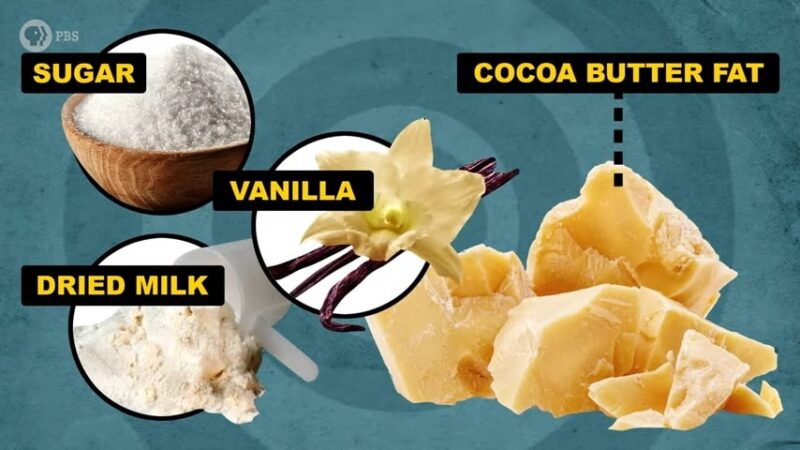
Bean-to-Bar
After the cocoa beans are fermented, dried, and roasted, they’re pressed to extract the fat – our beloved cocoa butter. This cocoa butter is then combined with milk solids, sugar, and often vanilla, then conched (a process of grinding and smoothing) to create the creamy, sweet confection we recognize as white chocolate.
Industrial vs. Artisanal Methods
Large-scale manufacturers often use additional ingredients, like vegetable oils and additives, to streamline production and increase shelf life.
Conversely, artisanal producers tend to focus on quality over quantity, using traditional methods and high-quality ingredients, which often results in a superior flavor and texture.
Popular Brands
While there are countless brands producing white chocolate, a few names stand out. Companies like Lindt, Ghirardelli, and Valrhona are widely recognized for their delicious white chocos.
However, if you’re a true connoisseur, exploring small-scale, artisanal brands can lead to some fantastic finds.
Culinary Uses of White Chocolate
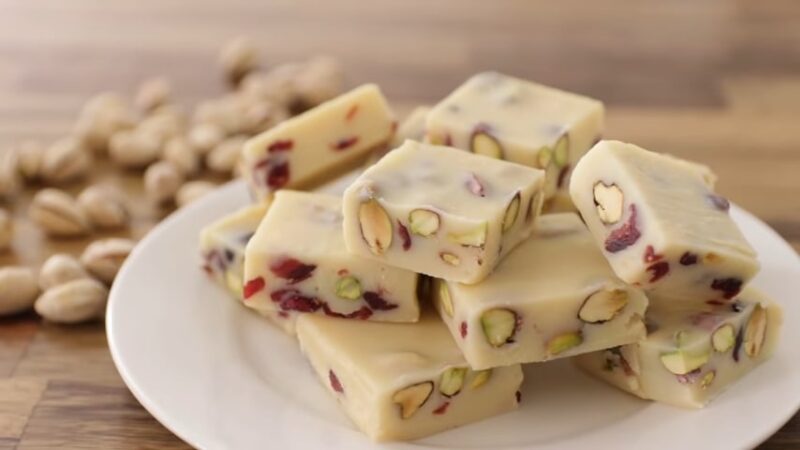
Baking
White chocolate’s unique properties make it a delight in baking. Its creamy, sweet profile can balance the flavors in cookies, cakes, and pastries. And don’t get me started on white choco macadamia nut cookies – they’re a classic for a reason!
Desserts
It also shines in various desserts and confections, like truffles, mousses, and cheesecakes. And let’s not forget the simple pleasure of a well-made white chocobar.
Beverages
Lastly, let’s not overlook its role in beverages. Whether it’s adding a sweet, creamy note to your morning coffee, enriching a hot chocolate, or playing a starring role in a white chocolate mocha, this versatile ingredient can elevate your drink game to a whole new level.
Myths Debunked
Addressing Misconceptions
Let’s dispel some myths, shall we?
- First and foremost, despite the absence of cocoa solids, white chocolate is indeed a type of chocolate as it contains cocoa butter.
- Second, while it is sweeter and contains less caffeine than dark chocolate, it is not devoid of nutritional value and can be part of a balanced diet.
Health Benefits and Concerns
Speaking of nutrition, white chocolate does offer some health benefits.
- It provides a good dose of calcium thanks to its milk content, and cocoa butter contains oleic acid, a heart-healthy monounsaturated fat.
- However, due to its high sugar content, it should be consumed in moderation.
Moderation
Like most indulgent foods, the key to enjoying white chocolate is balance. While it may not have the same antioxidant levels as dark chocolate, it offers other merits both in terms of taste and nutrition. So feel free to enjoy that piece of white chocolate, just keep the portion sizes in check!
FAQ
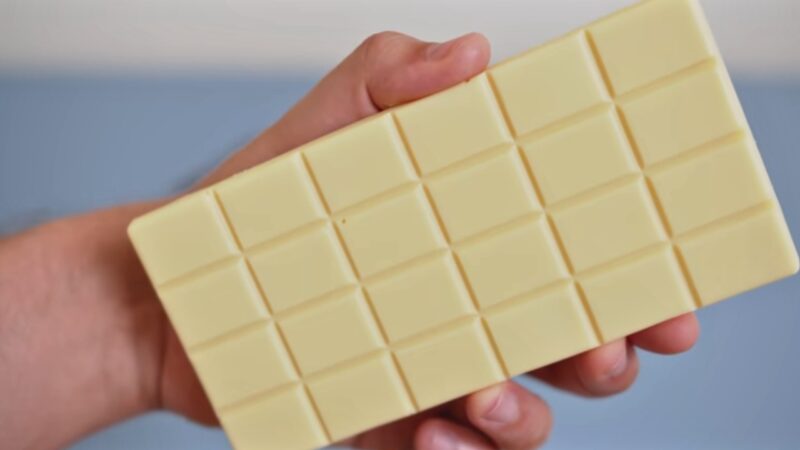
Is it suitable for individuals with lactose intolerance?
As white chocolate contains milk solids, it does contain lactose. Therefore, it’s generally not suitable for those with lactose intolerance. However, lactose-free versions are becoming more available as demand increases.
Can white chocolate be used in savory dishes?
While more commonly used in sweet dishes, white chocolate can indeed bring a unique twist to savory recipes. Its creaminess and subtle sweetness can balance flavors in dishes like sauces, glazes, and even soups. Just remember, a little goes a long way!
How should white chocolate be stored to maintain quality?
To preserve its flavor and texture, white chocolate should be stored in a cool, dry place, ideally between 60 and 70 degrees Fahrenheit. It should also be kept away from strong odors as it can absorb them. For longer storage, it can be refrigerated or frozen, but ensure it’s well-wrapped to prevent moisture absorption.
What are some creative ways to use white chocolate in recipes?
From white chocolate-covered strawberries to white chocolate-drizzled popcorn, there’s no shortage of creative uses. It can also be used as a sweet contrast in spicy dishes or paired with citrus flavors in desserts for an exquisite flavor balance.
Conclusion
So there you have it – the in’s and out’s of white chocolate, from its cocoa butter heart to its creamy sweetness. Its distinctive character sets it apart from other chocolates, carving a niche all its own.
Rather than comparing it to milk or dark , let’s appreciate white choco for what it is – a unique, delicious treat that brings a special touch to confections, baked goods, and beverages alike.
As artisanal chocolate-making continues to grow, I look forward to seeing how white chocolate evolves. Perhaps we’ll see new flavor combinations or innovative uses in both sweet and savory dishes. But for now, I’m off to enjoy a piece of this decadent delight – care to join me?
Hi, I’m Lili Harmon. Baking and making desserts are my passion. I love spending time in the kitchen, experimenting with new recipes, and perfecting old favorites. Whether it’s whipping up a batch of cookies, crafting a delicate pastry, or creating a decadent cake, the kitchen is my happy place. That’s why I wanted to share some of my best recipes with you.
